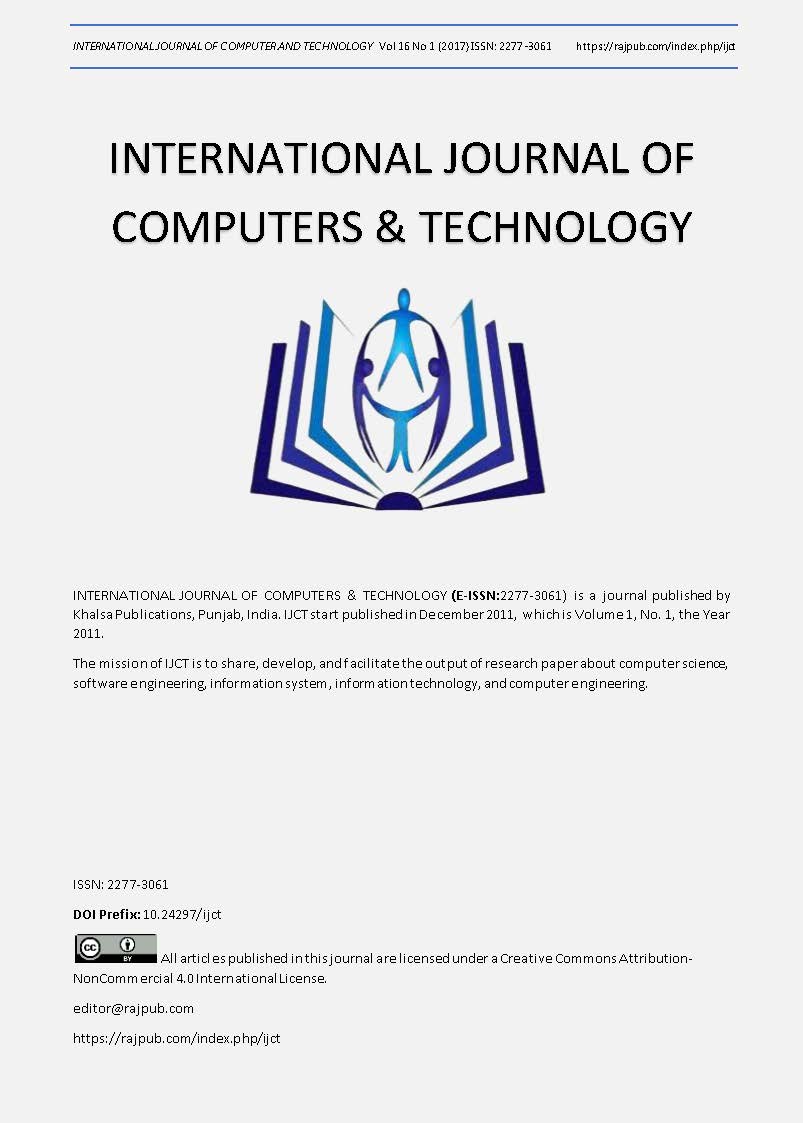A REVIEW ON ENGERY BASED SERVICE LEVEL AGREEMENT IN CLOUD ENVIRONMENT
DOI:
https://doi.org/10.24297/ijct.v16i1.5945Keywords:
Cloud Computing; IAAS; SAAS; PAAS; SLA; Green ComputingAbstract
Cloud Computing is being used widely all over the world by many IT companies as it provides various benefits to the users like cost saving and ease of use. However, with the growing demands of users for computing services, cloud providers are encouraged to deploy large datacenters which consume very high amount of energy and also contribute to the increase in carbon dioxide emission in the environment. Therefore, we require to develop techniques which will help to get more environment friendly computing i.e. Green Cloud Computing. Cloud computing is an increasingly popular paradigm for accessing computing resources. This paper discusses some of the research challenges for cloud computing from an enterprise or organizational perspective, and puts them in context by reviewing the existing body of literature in cloud computing. Various research challenges relating to the following topics are discussed: the organizational changes brought about by cloud computing; the economic and organizational implications of its utility billing model; the security, legal and privacy issues that cloud computing raises. It is important to highlight these research challenges because cloud computing is not simply about a technological improvement of data centers but a fundamental change in how IT is provisioned and used. This type of research has the potential to influence wider adoption of cloud computing in enterprise, and in the consumer market too
Downloads
References
[2] F. Farahnakian, T. Pahikkala, P. Liljeberg, J. Plosila and H. Tenhunen, "Utilization Prediction Aware VM Consolidation Approach for Green Cloud Computing," IEEE, pp. 381-388, 2015.
[3] S. P Reddy and C. H K S, "Energy Aware Scheduling of Real-Time and Non Real-Time Tasks on Cloud Processors," IEEE, 2014.
[4] Y. -J. Chiang, Y. -C. Ouyang and C. -H. Hsu, "An Efficient Green Control Algorithm in Cloud Computing for Cost Optimization," IEEE, pp. 1-14, 2013.
[5] L. A. Rocha and E. Cardozo, "A Hybrid Optimization Model for Green Cloud Computing," IEEE, pp. 11-20, 2014.
[6] M. Giacobbe, A. Celesti, M. Fazio, M. Villari and A. Puliafito, "An Approach to Reduce Carbon Dioxide Emissions Through Virtual Machine Migrations in a Sustainable Cloud Federation," IFIP, 2015.
[7] S. Royl and S. Gupta, "The Green Cloud Effective Framework: An Environment Friendly Approach Reducing CO2 Level," IEEE, pp. 233-236, 2014.
[8] M. Yakhchi, S. G. Mohssen , S. Yakhchi, M. Fazeli and A. Patooghi, "Proposing a Load Balancing Method Based on Cuckoo Optimization Algorithm for Energy Management in Cloud Computing Infrastructures," IEEE, 2015.
[9] M. Sabbir Hasan, Y. Kouki, T. Ledoux and J. Louis Pazat, "Exploiting Renewable sources: when Green SLA becomes a possible reality in Cloud computing," IEEE, pp. 1-14, 2015.
[10] C. Qiu, H. Shen and L. Chen, "Towards Green Cloud Computing: Demand Allocation and Pricing Policies for Cloud Service Brokerage," IEEE, pp. 203-212, 2015.
[11] Y. Li, M. Chen, W. Dai and M. Qiu, "Energy Optimization With Dynamic Task Scheduling Mobile Cloud Computing," IEEE, pp. 1-10, 2015.
[12] Y. Xia, M. Zhou, X. Luo, S. Pang and Q. Zhu, "A Stochastic Approach to Analysis of Energy-Aware DVS-Enabled Cloud Datacenters," IEEE, pp. 73-83, 2014.
[13] M. B. Nagpure, P. Dahiwale and P. Marbate, "An Efficient Dynamic Resource Allocation Strategy for VM Environment in Cloud," IEEE, 2015.
[14] Y. E. . F. M.S. Vasanthi, "Energy Efficient Mechanism for Green Computing in Wireless Storage Area Networks," IEEE, pp. 1311-1314, 2015.
[15] S. .Yakhchi, S. Ghafari, M. Yakhchi, M. Fazeli and A. Patooghy, "ICA-MMT: A Load Balancing Method in Cloud Computing Environment," IEEE, 2015.
[16] A. v and S. S Manakattu, "Neighbour Aware Random Sampling (NARS) algorithm for load balancing in Cloud computing," IEEE, 2015.
[17] N. Dehouche, "A Bi-criteria Algorithm for Low-Carbon and QoS-Aware Routing in Cloud Computing Infrastructures," IEEE, 2015.
[18] Y. -Wen Chen and J. M. Chang, "EMaaS: Cloud-Based Energy Management Service for Distributed Renewable Energy Integration," IEEE, pp. 2816-2824, 2015.
[19] Y. Peng, D.-K. Kang, F. Hazemi and C.-H. Youn, "Energy andQoS aware resource allocation for heterogeneous sustainable cloud datacenters," ELSEVIER, pp. 1-16, 2016.
[20] C.-Y. Hsu, C.-S. Yang, L.-C. Yu, C.-F. Lin, H.-H. Yao, D.-Y. Chen, K. Lai and P.-C. Chang, "Development of a cloud-based service framework for energy conservation in a sustainable intelligent transportation system," ELSEVIER, pp. 1-8, 2014.`









